17-9. The Full Moon had reached the
Milky Way at Sagittarius, and at this place 39 glyphs remained of the E
text. There was no future ahead for the Archer and the Goat who
apparently instead were looking
into their past:
Or the power of the Sun had disappeared while the Moon moved
withershins.
... Men's spirits were thought to dwell in
the Milky Way between incarnations. This conception has been
handed down as an Orphic and Pythagorean tradition fitting into
the frame of the migration of the soul. Macrobius, who has
provided the broadest report on the matter, has it that souls
ascend by way of Capricorn, and then, in order to be reborn,
descend again through the 'Gate of Cancer'. Macrobius talks of
signs; the constellations rising at the solstices in his
time (and still in ours) were Gemini and Sagittarius: the 'Gate
of Cancer' means Gemini ...
|
 |
 |
 |
 |
|
Eb8-2 |
Eb8-3 |
Eb8-4 (266) |
Eb8-5 |
|
te
rima tu ua |
te
henua |
ku tu ua |
kua rave te rima |
|
Rave.
Ta.: Rave, to take. Sa.: lavea, to be
removed, of a disease. To.: lavea, to bite, to
take the hook, as a fish. Fu.: lave, to
comprehend, to seize. Niuē:
laveaki, to
convey. Rar.: rave,
to take, to receive. Mgv: rave,
to take, to take hold; raveika,
fisherman. Ma.: rawe,
to take up, to snatch. Ha.: lawe,
to take and carry in the hand. Mq.: ave,
an expression used when the fishing line is caught in
the stones. Churchill 2. |
|
June 27 |
28 |
29 (*100 → 84 + 16) |
30 (181 = 242 - 61) |
|
No star listed (98) |
ψ3
Aurigae (99.4), ψ2 Aurigae (99.5)
GEMMA (α Cor. Bor.) |
ψ4 Aurigae (100.5),
MEBSUTA (Outstretched) = ε Gemini
(100.7) |
SIRIUS =
α Canis Majoris
(101.2), ψ5
Aurigae (101.4), ν Gemini (101.6), ψ6 Aurigae (101.7)
*60.0 = *101.4 - *41.4 |
|
... In other words, the ancient Druidic
religion based on the oak-cult will be swept
away by Christianity and the door - the god
Llyr - will languish forgotten in the Castle
of Arianrhod, the Corona Borealis.
This helps us to understand the relationship
at Rome of Janus and the White Goddess
Cardea who is ... the Goddess of Hinges who
came to Rome from Alba Longa. She was the
hinge on which the year swung - the ancient
Latin, not the Etruscan year - and her
importance as such is recorded in the Latin
adjective cardinalis - as we say in
English 'of cardinal importance - which was
also applied to the four main winds; for
winds were considered as under the sole
direction of the Great Goddess until
Classical times
... |
|
→
VISIBLE CLOSE TO THE FULL MOON: |
|
ν
Pavonis (280.4),
κ
Cor. Austr.
(280.9)
*239.0 = *280.4 - *41.4 |
Abhijit-22 (Victorious)
θ Cor. Austr. (281.0),
VEGA = α Lyrae
(281.8) |
No star listed (282) |
ζ
Pavonis (283.4),
λ
Cor. Austr. (283.6),
DOUBLE DOUBLE =
ε
Lyrae
(283.7),
ζ
Lyrae (283.8)
*242.0 = *283.4 - *41.4 |
|
Dec 26 (360) |
27 (19 * 19) |
28 |
29
(3 * 121) |
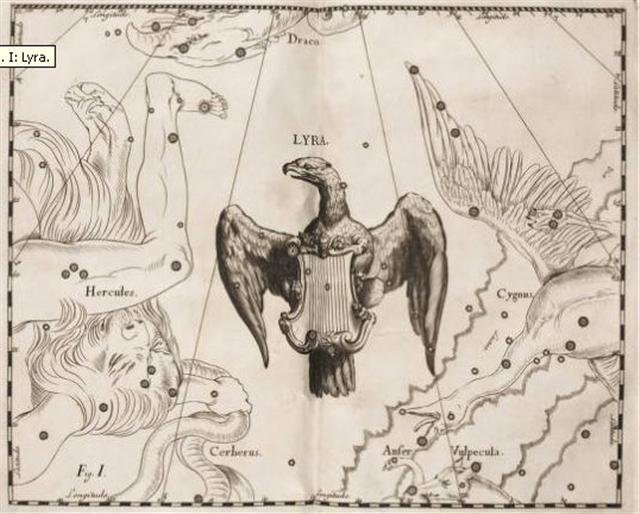 |
When anciently the Sun had reached December 29 it had occurred in the
last day of the year. It was 242 (11 * 22) days after
Beltaine in May 1 (121).
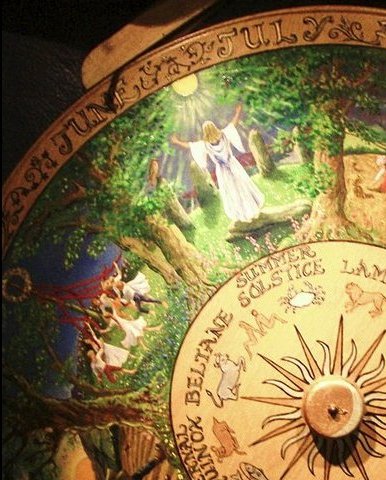
The cycle of the Earth was not 365 but 364 nights, which meant it
was convenient to count with 4 quarters corresponding to 52 weeks
in a year.
... Another name for Mercury was Hermes
and Hermes Trismegisthos (thrice-mighty) could have
referred to the fact that there were 3.141 *
115.88 = 364.0 days for the
cycle of the Earth around the Sun. Although the calendar has
365 days for a year this is due to the fact that the Earth
has to turn around an extra day in order to compensate for
how the direction to the Sun changes during a year
...

Moving from one side of the year to the other meant adding 364 /
2 = 182 days. However, the Gregorian calendar carried 365 days,
which necessitated a jump from day 364 (December 30) to January
1 in order to make the stars and the calendar days (with their
glyphs) continue in parallel. 242 = 182 + 60 and 121 = 61 + 60.
 |
 |
 |
 |
 |
 |
 |
|
Eb8-6
(268) |
Eb8-7 |
Eb8-8 |
Eb8-9 |
Eb8-10 |
Eb8-11 |
Eb8-12
(600) |
|
te
kahi |
kua
oho ku tutu |
koia - e
ua |
huki ma te
papamea |
hoko huki erua |
|
Kahi. Tuna; two sorts:
kahi aveave, kahi matamata. Vanaga. Mgv.:
kahi, to run, to flow. Mq.: kahi, id.
Churchill. Rangitokona, prop up the heaven!
// Rangitokona, prop up the morning! // The
pillar stands in the empty space. The thought [memea]
stands in the earth-world - // Thought stands also
in the sky. The kahi stands in the
earth-world - // Kahi stands also in the sky.
The pillar stands, the pillar - // It ever stands,
the pillar of the sky. (Morriori creation myth
according to Legends of the South Seas.)
Tutu. 1. Circle of fishing nets arranged
in the shape of a funnels or baskets. 2. To light a
fire; he-tutu i te ahi: to burn something. 3.
To hit, to strike, to beat. Tûtú, to shake
(something) clean of dust or dirt; he-tûtú te
oone o te nua, to shake the dirt off a nua
cape. Tutuhi, to reject the responsibility
for a mistake onto one another, to blame one another
for a mistake (see tuhi). Tutuki, to
stumble, to trip. O tutuki te va'e, in order
not to trip. Tutuma, firebrand, partly burnt
stick. Tuturi, to kneel. Vanaga. 1. To beat
bark for cloth. PS Pau., Mgv., Mq., Ta.: tutu,
id. Sa., To., Fu.: tutu, id. 2. A broom, to
sweep, to clean. Mq.: tutu, to beat out the
dust. 3. To shake, to winnow. Mgv.: tutu, to
tremble, to leap. Mq.: tutu, to shake. 4. To
kindle, to light, to ignite, to set fire, to burn.
Mq.: tutu, to burn, to set fire. 5. To stand;
hakatutu, to set joists. P Mgv., Mq.: tutu,
to stand upright. Ta.: tu, id. Tutua (tutu
1): board on which bark is beaten into cloth. PS
Mgv.: tutua, a cloth beater. Mq., Ta.:
tutua, wood on which cloth is beaten. Sa., Fu.:
tutua, id. Tutui: tutui ohio,
chain, tutui kura, shawl. Mq.: tuitui kioé,
chain. Tutuki: shock, contusion, to run
against, to collide; tukukia, to run foul of.
P Pau.: tukituki, to strike, to pound, to
grind. Mgv.: tukia, to strike against, shock,
concussion. Mq.: tutuki, id. Ta.: tui,
id. Tutuma: 1. (tutu - ma) a
live coal. 2. Tree trunk T (? tumu).
Tutumata, ligament of the eye, orbit, eyelid. T
(tutumate, eyelid G). Tutuu,
bristling. Churchill.
Papa. 1. Underground rock; motionless;
rocky sea bottom; large flat stone; figuratively:
tagata papa important man, author of great
works. 2. Wooden plank currently used much like a
surf-board in the sport called garu; it was
formerly called papa gaatu mo te garu,
because it was made from dry totora leaves
woven into the shape of a plank. 3. To line up
things side by side on a flat surface, for instance,
to line up fish on top of a flat stone. Vanaga.
Shoulderblade. Papapapa, a chill, to shiver,
to tremble, to shudder. Churchill. |
|
July 1 |
2 |
3 |
4 (185) |
5 |
6 |
7 (188) |
|
τ
Puppis (102.2),
ψ7 Aurigae (102.4)
*61.0 = *102.4 - *41.4 |
Mash-mashu-sha-Risū-9 (Twins of the Shepherd)
θ
Gemini (103.0),
ψ8 Aurigae (103.2),
ALHENA
=
γ
Gemini
(103.8),
ψ9
Aurigae (103.9) |
ADARA (Virgins) = ε Canis Majoris
(104.8) |
ω Gemini (105.4),
ALZIRR (Button) =
ξ
Gemini
(105.7),
MULIPHEIN
(Oaths) =
γ
Canis Majoris
(105.8),
MEKBUDA (Contracted) =
ζ
Gemini
(105.9)
*64.0 = *105.4 - *41.4 |
7h
(106.5)
No star listed (106) |
WEZEN (Weight) =
δ
Canis Majoris
(107.1),
τ
Gemini (107.7),
δ
Monocerotis (107.9) |
No star listed (108) |
|
→ VISIBLE CLOSE
TO THE FULL MOON: |
|
South Dipper-8 (Unicorn)
Φ
Sagittarii (284.0),
μ
Cor. Austr. (284.6),
η
Cor. Austr.,
θ
Pavonis (284.8) |
SHELIAK (Tortoise) = β Lyrae, ν Lyrae (285.1), ο Draconis (285.5). λ Pavonis (285.7)
ATLAS (27 Tauri) |
χ
Oct. (286.0),
AIN AL RAMI (Eye of the Archer) =
ν
Sagittarii
(286.2),
υ
Draconis (286.4),
δ
Lyrae (286.3),
κ
Pavonis (286.5),
ALYA (Fat Tail) =
θ
Serpentis
(286.6)
*245.0 = *286.4 - *41.4 |
ξ Sagittarii (287.1), ω Pavonis (287.3),
ε
Aquilae, ε Cor. Austr., SULAPHAT (Little Tortoise
Shell) = γ Lyrae (287.4),
λ Lyrae (287.7),
ASCELLA
(Armpit) = ζ
Sagittarii,
BERED = i Aquilae (Ant.)
(287.9)
*246.0 = *287.4 - *41.4 |
Al Na'ām-18 (Ostriches)
/
Uttara Ashadha-21 (Elephant tusk, small bed)
NUNKI = σ Sagittarii
(288.4),
ζ Cor. Austr. (288.5),
MANUBRIUM
= ο Sagittarii
(288.8), ζ Aquilae (288.9)
*247.0 = *288.4 - *41.4 |
19h (289.2)
λ
Aquilae (Ant.) (289.1),
γ
Cor. Austr (289.3),
τ
Sagittarii (289.4),
ι
Lyrae (289.5),
δ
Cor.
Austr. (289.8)
*248.0 = *289.4 - *41.4 |
Al Baldah-19 (City)
AL BALDAH = π Sagittarii, ALPHEKKA (Dish) MERIDIANA
= α Cor. Austr.
(290.1), β Cor. Austr. (290.2) |
 |
|
Dec 30 (364) |
31 |
Jan 1 |
2 |
3 |
4 |
5 (370. *290) |
|
Dec 31 |
Jan 1 |
2 |
3 |
4 |
5 (107 + 182) |
6 (107 + 183) |
.jpg) |
I.e., all the cardinal points of the Sun in the
Gregorian calendar had to be shifted 1 place ahead.
... 'I wan't a clean cup', interrupted
the Hatter: 'let's all move one place on.' He moved as he
spoke, and the Dormouse followed him: the March Hare moved
into the Dormouse's place, and Alice rather unwillingly took
the place of the March Hare. The Hatter was the only one who
got any advantage from the change; and Alice was a good deal
worse off than before, as the March Hare had just upsed the
milk-jug into his plate [creating the Milky Way river] ...

Counting from January 6 (glyph number 600) to February 1 (31
+ 1 = 32) therefore ought to correspond to a move 32 - 6 = 26
glyphs ahead from Eb8-12 to Eb8-38. But since
26 suggests 2 * 13 we should make a first move from
Eb8-12 to Eb8-25, where Metoro saw 'the Milky Way' (te
goe):
 |
 |
 |
|
Eb8-13 |
Eb8-14
(276 = 12 * 23) |
Eb8-15
(378 - 101) |
|
te tara
hoi |
e
ariki |
he tara
hoe |
|
E. Ê, yes. E ... é disjunct vocative
marker. E vovo é! Girl! E te matu'a é! Father! (Vanaga) 1.
By. 2. And. 3. Oh! 4. Yes. 5. Verb sign. 6.
Negative verb sign; e maaa, inexperienced; ina e,
negative sign; ina e rakerakega, innocent; ina e ko mou,
incessant; e ko, not, except. 7. Wave. 8. Weak demonstrative,
functioning as article. (Churchill)
Hoe 1. Paddle. Mgv.: hoe, ohe, id.
Mq., Ta.: hoe, id. 2. To wheeze with fatigue (oeoe 2).
Arero oeoe, to stammer, to stutter; Mgv. oe, to make a
whistling sound in breathing; ohe, a cry from a person out of
breath. Mq.: oe, to wheeze with fatigue. 3. Blade, knife; hoe
hakaiu, clasp-knife, jack-knife; hoe hakanemu,
clasp-knife; hoe pikopiko, pruning knife. 4. Ta.: oheohe,
a plant. Ma.: kohekohe, id. Churchill. T. Paddle. E hoe te
heiva = 'and to paddle (was their) pleasure'. Henry. Hoea,
instrument for tattooing. Barthel. Goe. Milky Way.
Vanaga. Go. Pau.: goge, to break. Ma.:
ngongengonge, crippled. Churchill. Pau.: gogo, the navel and
cord. Mgv.: gogo, id. 2. Mgv.: gogo, a conical hole. Ta.:
oo, a large cavity. Ha.: no, a hole left to draw off water
from taro patches. 3. Mgv.: gogo, thin cheeks, sunken eyes. Ta.:
tu-oo, wasted away. Ma.: ngongo, emaciated. Churchill.
Sa.: ngongo, the tern (Sterna longipennis). To., Niuē;
ngongo, the sea gull. Futuna:
ngŏngŏ, the name of a bird.
Vi.: ngongo, a sea bird.
Churchill 2. Ho. 1. Ho!, Oh! 2. Lest, on
the point of. 3. To deliver, to give up. Churchill. |
|
July
8 |
9 (190) |
10 |
|
λ Gemini (109.4),
WASAT (Middle) = δ Gemini
(109.8)
*68.0 = *109.4 - *41.4 |
No star
listed (110) |
AL-UDRA (Virgin) = η
Canis Majoris
(111.1),
PROPUS = ι Gemini
(111.4), GOMEISA (Water-eyed) = β Canis Minoris
(111.6)
*70.0 = *111.4 - *41.4 |
|
→ VISIBLE CLOSE
TO THE FULL MOON: |
|
AL-ADFAR (The Talons) = η Lyrae
(291.1),
NODUS II
= δ Draconis
(291.5), ψ Sagittarii (291.6), τ Draconis (291.7), θ Lyrae (291.8)
Jan
7 |
ω
Aquilae (292.1), ρ Sagittarii (292.6), υ Sagittarii (292.7)
Jan
8
(80 + 292 = 372 = 12 * 31) |
π
Draconis,
ARKAB PRIOR = β¹ Sagittarii
(293.0),
ARKAB
POSTERIOR = β² Sagittarii,
AL-RAMI (The Archer) = α Sagittarii
(293.2), χ
Sagittarii (293.6)
Jan 9
(273 + 100) |
 |
... In late September or early October 130, Hadrian and his
entourage, among them Antinous, assembled at Heliopolis to
set sail upstream as part of a flotilla along the River
Nile. The retinue included officials, the Prefect, army and
naval commanders, as well as literary and scholarly figures.
Possibly also joining them was Lucius Ceionius Commodus, a
young aristocrat whom Antinous might have deemed a rival to
Hadrian's affections. On their journey up the Nile, they
stopped at Hermopolis Magna, the primary shrine to the god
Thoth. It was shortly after this, in October [in the year
A.D.] 130 - around the time of the festival of Osiris - that
Antinous fell into the river and died, probably from
drowning. Hadrian publicly announced his death, with gossip
soon spreading throughout the Empire that Antinous had been
intentionally killed. The nature of Antinous's death remains
a mystery to this day, and it is possible that Hadrian
himself never knew; however, various hypotheses have been
put forward. One possibility is that he was murdered by a
conspiracy at court. However, Lambert asserted that this was
unlikely because it lacked any supporting historical
evidence, and because Antinous himself seemingly exerted
little influence over Hadrian, thus meaning that an
assassination served little purpose. Another suggestion is
that Antinous had died during a voluntary castration as part
of an attempt to retain his youth and thus his sexual appeal
to Hadrian. However, this is improbable because Hadrian
deemed both castration and circumcision to be abominations
and as Antinous was aged between 18 and 20 at the time of
death, any such operation would have been ineffective. A
third possibility is that the death was accidental, perhaps
if Antinous was intoxicated. However, in the surviving
evidence Hadrian does not describe the death as being an
accident; Lambert thought that this was suspicious. Another
possibility is that Antinous represented a voluntary human
sacrifice. Our earliest surviving evidence for this comes
from the writings of Dio Cassius, 80 years after the event,
although it would later be repeated in many subsequent
sources. In the second century Roman Empire, a belief that
the death of one could rejuvenate the health of another was
widespread, and Hadrian had been ill for many years; in this
scenario, Antinous could have sacrificed himself in the
belief that Hadrian would have recovered. Alternately, in
Egyptian tradition it was held that sacrifices of boys to
the Nile, particularly at the time of the October Osiris
festival, would ensure that the River would flood to its
full capacity and thus fertilize the valley; this was made
all the more urgent as the Nile's floods had been
insufficient for full agricultural production in both 129
and 130. In this situation, Hadrian might not have revealed
the cause of Antinous's death because he did not wish to
appear either physically or politically weak. Conversely,
opposing this possibility is the fact that Hadrian disliked
human sacrifice and had strengthened laws against it in the
Empire ...
 |
 |
 |
 |
|
Eb8-16 |
Eb8-17 |
Eb8-18 |
Eb8-19 |
|
te henua |
ma te hio ia |
te rima
hakatu ua |
te ariki |
|
July 11 |
12
(193) |
13 |
14 |
|
ρ Gemini
(112.1),
Eskimo Nebula = NGC2392 Gemini
(112.2)
ANTARES (α
Scorpii) |
Al Dhirā'-5
(Forearm)
/
Punarvasu-7 (The Two Restorers of Goods)
/
Mash-mashu-Mahrū-10 (Western One
of the Twins)
CASTOR (Beaver) = α Gemini (113.4)
*113.4 = *41.4 + *72.0 |
ANA-TAHUA-VAHINE-O-TOA-TE-MANAVA-7 (Pillar for
Elocution)
υ
Gemini (114.0), MARKAB PUPPIS = κ Puppis
(114.7), ο Gemini (114.8),
PROCYON = α Canis Minoris
(114.9) |
α Monocerotis (115.4), σ Gemini (115.7)
*74.0 = *115.4 - *41.4 |
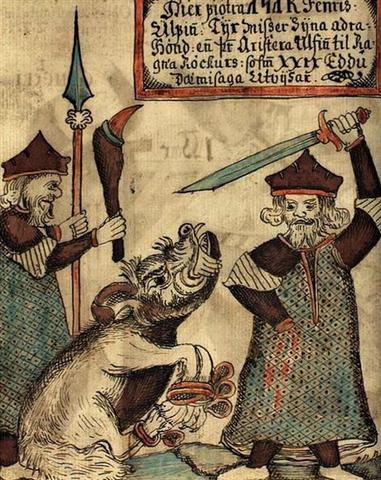 |
|
→ VISIBLE CLOSE
TO THE FULL MOON: |
|
DENEB
OKAB (Tail of the Eagle) = δ Aquilae (Ant.) (294.0),
α
VULPECULAE (Little Fox)
(294.9)
Jan
10 |
ν
Aquilae (Ant.) (295.0),
ALBIREO - Hen's Beak =
β
Cygni
(295.5)
Jan 11 (375 = 193 + 182) |
ALSAFI (Fire Tripod) = σ Draconis (296.0),
μ
Aquilae (296.3),
ι
Aquilae (Ant.)
(296.8),
κ Aquilae (Ant.) (296.9)
Jan 12 |
ε Sagittae (297.1),
σ Aquilae (Ant.)
(297.4), SHAM (Arrow) = α Sagittae
(297.8)
*256.0
= *297.4 - *41.4Jan 13 |
 |
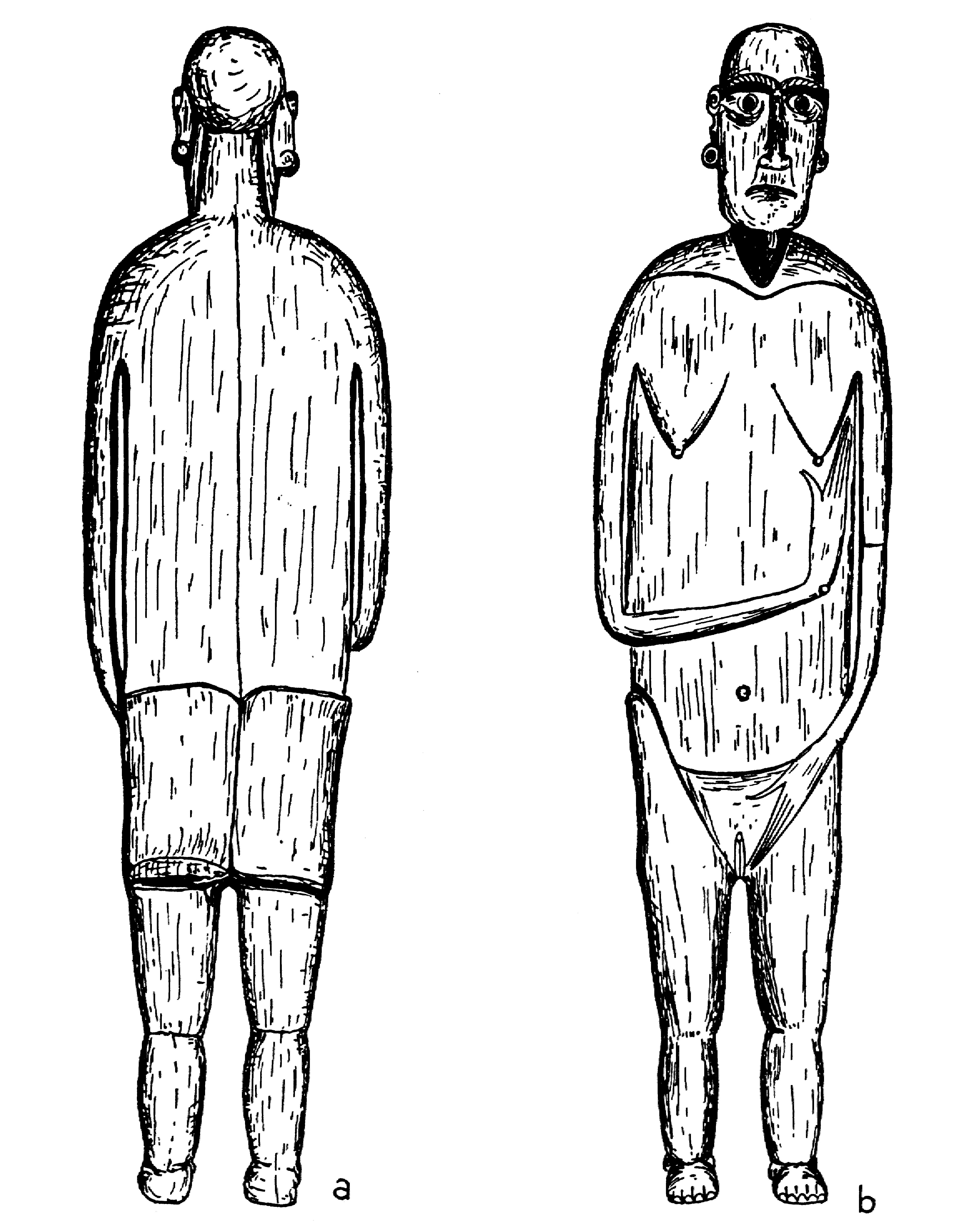

 |
 |
 |
 |
 |
 |
|
Eb8-20 |
Eb8-21 |
Eb8-22
(284) |
Eb8-23 |
Eb8-24 |
Eb8-25 |
|
te henua |
ihe tapamea |
te rima to kava |
tagata
rere ragi - te henua |
tara hoi |
te goe |
|
July
15 (196) |
16 |
17 |
18 |
19 |
20
(201) |
|
Mash-mashu-arkū-11 (Eastern One
of the Twins)
κ Gemini
(116.1),
POLLUX = β Gemini
(116.2),
π Gemini (116.9) |
AZMIDISKE (Little
Shield) =
ξ Puppis (117.4)
*116.0 = *117.4 - *41.4 |
Φ Gemini (118.4)
*117.0 = *118.4 - *41.4 |
DRUS (Hard) = χ Carinae
(119.9) |
ω Cancri
(120.2) |
8h (121.7)
χ
Gemini (121.0),
NAOS (Ship) = ζ
Puppis
(121.3) |
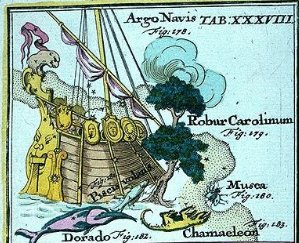 |
|
→ VISIBLE CLOSE
TO THE FULL MOON: |
|
β
Sagittae (298.0),
χ
Aquilae (298.3),
ψ
Aquilae (298.8)
Jan
14 (378) |
υ
Aquilae (299.1),
TARAZED =
γ
Aquilae
(299.3),
δ
Sagittae (299.6),
π
Aquilae (299.9)
Jan 15 |
Sravana-23
TYL = ε Draconis (300.0),
ζ Sagittae (300.1),
ALTAIR = α Aquilae
(300.3), ο Aquilae (300.5),
BEZEK = η Aquilae (Ant.)
(300.8)
Jan 16 |
ι
Sagittarii (301.2),
TEREBELLUM = ω Sagittarii,
ξ Aquilae (301.3),
ALSHAIN = β Aquilae
(301.6), φ Aquilae (301.8)
Jan 17 |
ε
Pavonis, θ Sagittarii (302.3), γ Sagittae (302.5), μ Pavonis (302.7)
Jan 18 |
τ
Aquilae
(303.8)
Jan 19
(383) |
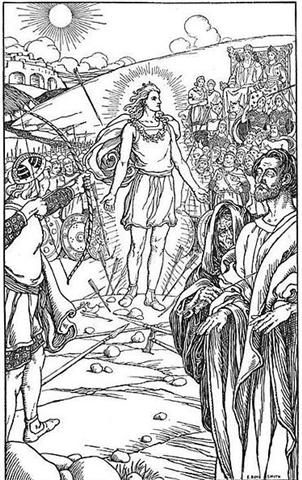 |
We
should connect Eb8-22 with Ga2-26:
|
 |
*100 |
 |
|
MAY 16 (*136) |
ALTAIR (*300
→ *236) |
|
216 |
316 = 380 -
64 (Jan 16) |

|







.jpg)









